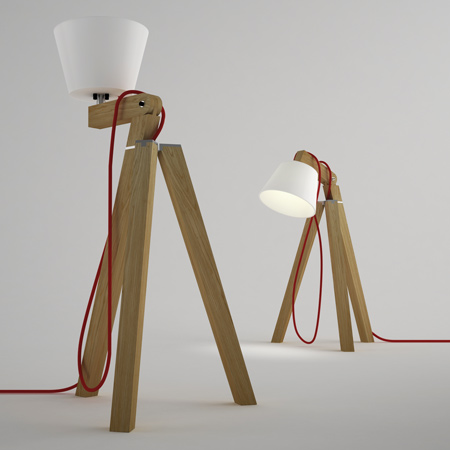
Studio Mini by Anna Hadwick
New Designers 09: Nottingham Trent University graduate Anna Hadwick exhibited a table lamp on a tripod at graduate show New Designers in London last week.
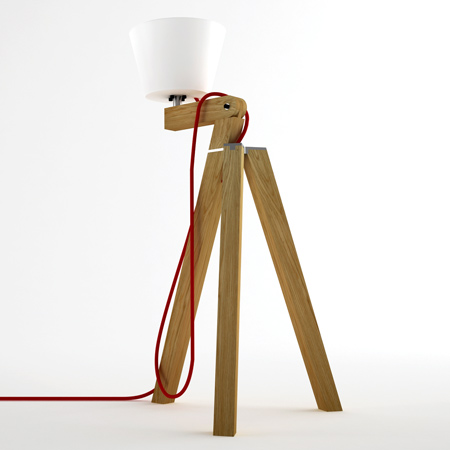
Called Studio Mini and made of oak, the product has three adjustable legs and a head that pivots through 180 degrees.
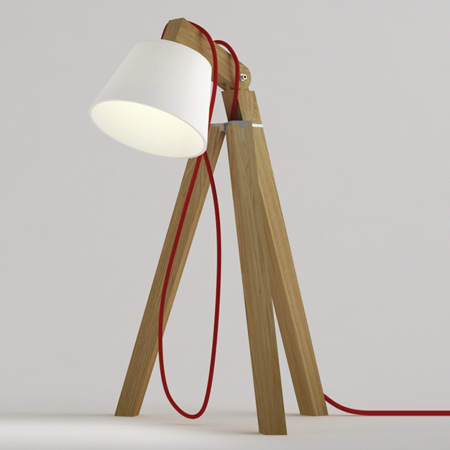
A detachable, porcelain shade inspired by the twist-and-pull action of changing a light bulb houses three LEDs.
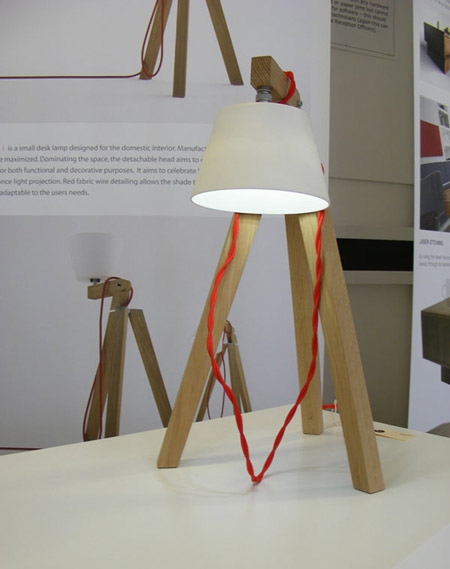
Hadwick also exhibited Drawer, an oak desk with drawers that do not close.
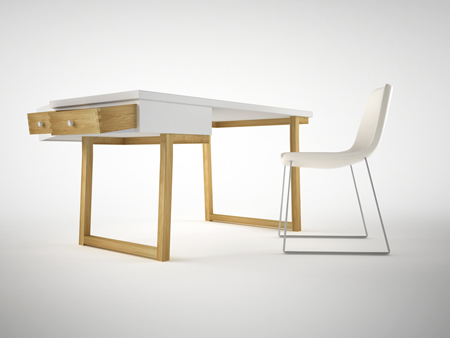
The project aims to encourage creativity by creating disorder and forces the owner to display their possessions.
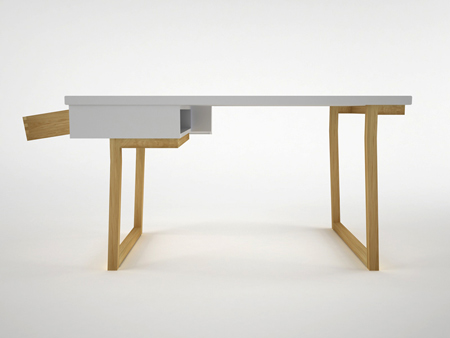
See all our stories from New Designers in our special category.
Here's some text from Anna Hadwick:
--
Studio Mini
The Studio Mini is a small desk lamp designed for the domestic interior. Manufactured in Oak, its 3-legged structure provides stability whilst allowing surface area to be maximised. Dominating the space, the rotatable and detachable head aims to encourage interaction and allows the lamp to be utilised for both decorative and functional purposes.
Free From Restriction
The Studio Mini attempts to question the restriction we as designers place upon a product’s usage, by utilising a use-me-how-you-will approach. Encouraging intuitive interaction, the head can be detached with a simple twist and pull movement. Inspired by the action of changing a light bulb, the lamp communicates its functionality directly to its user. Interaction with the porcelain head places irony upon pre-conceived notions of porcelain structures, which are often associated with restriction.
The lamp uses 3 x 1 Watt LEDs, together which a low voltage adapter, providing sufficient levels of lighting whilst using minimal energy. The pivoted arm, which rotates within a 180 degree angle, achieves a variety of lighting projections. Dual-core cabling, coated with red fabric detailing, is hidden within the back leg and exposed above for the purpose of moving the head around the space as desired.
Drawer
Drawer is a desk designed to question the way in which we conform to organisation. It is the result of an exploration into naturalistic methods of practice within the working environment. It aims to play upon pre-conceptions by providing drawers which remain permanently extended. Its purpose is to encourage the individual to expose rather than attempt to hide their possessions, resulting in personalisation of the space. Manufactured in Oak its main structure aims to celebrate traditional methods of joinery, designed for those within the design field, as well as those looking to personalise their domestic office space.
Drawer works upon theories explored, which highlight the benefits of disorder in an environment so predominantly controlled by order. Research undertaken found that certain levels of mess can enhance the creative thought process allowing for the generation of new solutions. Storage compartments allow for the opportunity to hide clutter where necessary.